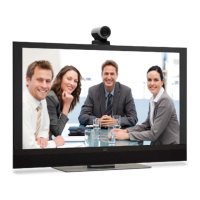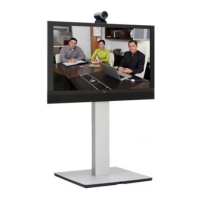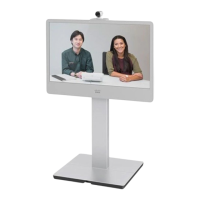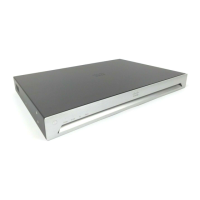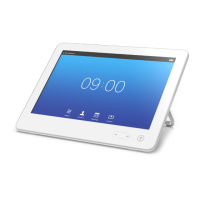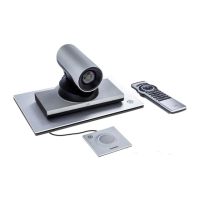D15119.02 MX700 and MX800 Administrator Guide TC7.2, AUGUST 2014. www.cisco.com — Copyright © 2014 Cisco Systems, Inc. All rights reserved.
110
Cisco TelePresence MX700 and MX800 Administrator Guide
Video Input Connector [1..5] Visibility
Define the visibility of the video input connector in the menus on the user interface.
Requires user role: ADMIN
Value space: <Never/Always/IfSignal>
Never: When the input source is not expected to be used as a presentation source, set to
Never.
Always: When set to Always, the menu selection for the video input connector will always be
visible on the graphical user interface.
IfSignal: When set to IfSignal, the menu selection for the video input connector will only be
visible when something is connected to the video input.
Example:
Video Input Connector 2 Visibility: IfSignal
Video Input Connector [1..5] CameraControl Mode
Define whether the camera that is connected to this video input connector can be controlled or
not.
Note that camera control is not available for Connector 4 (DVI-I) and Connector 5 (S-video/
Composite).
Requires user role: ADMIN
Value space: Connector 1, 2, 3: <Off/On> Connector 4,5: <Off>
Off: Disable camera control.
On: Enable camera control.
Example:
Video Input Connector 1 CameraControl Mode: On
Video Input Connector [1..5] CameraControl CameraId
The camera ID is used to identify all cameras that are controlled from the codec. Use the
xStatus Camera API command to see the IDs of the different cameras.
Requires user role: ADMIN
Value space: Connector 1, 2, 3: <1/2/3/4/5/6/7> Connector 4,5: <1>
Range: Select the ID of the camera.
Example:
Video Input Connector 1 CameraControl CameraId: 1
Video Input Connector [1..5] Quality
When encoding and transmitting video there will be a trade-off between high resolution and
high frame rate. For some video sources it is more important to transmit high frame rate than
high resolution and vice versa.
Requires user role: ADMIN
Value space: <Motion/Sharpness>
Motion: Gives the highest possible frame rate. Used when there is a need for higher frame
rates, typically when a large number of participants are present or when there is a lot of
motion in the picture.
Sharpness: Gives the highest possible resolution. Used when you want the highest quality of
detailed images and graphics.
Example:
Video Input Connector 3 Quality: Sharpness
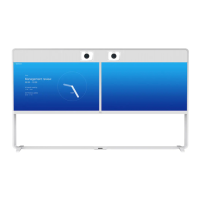
